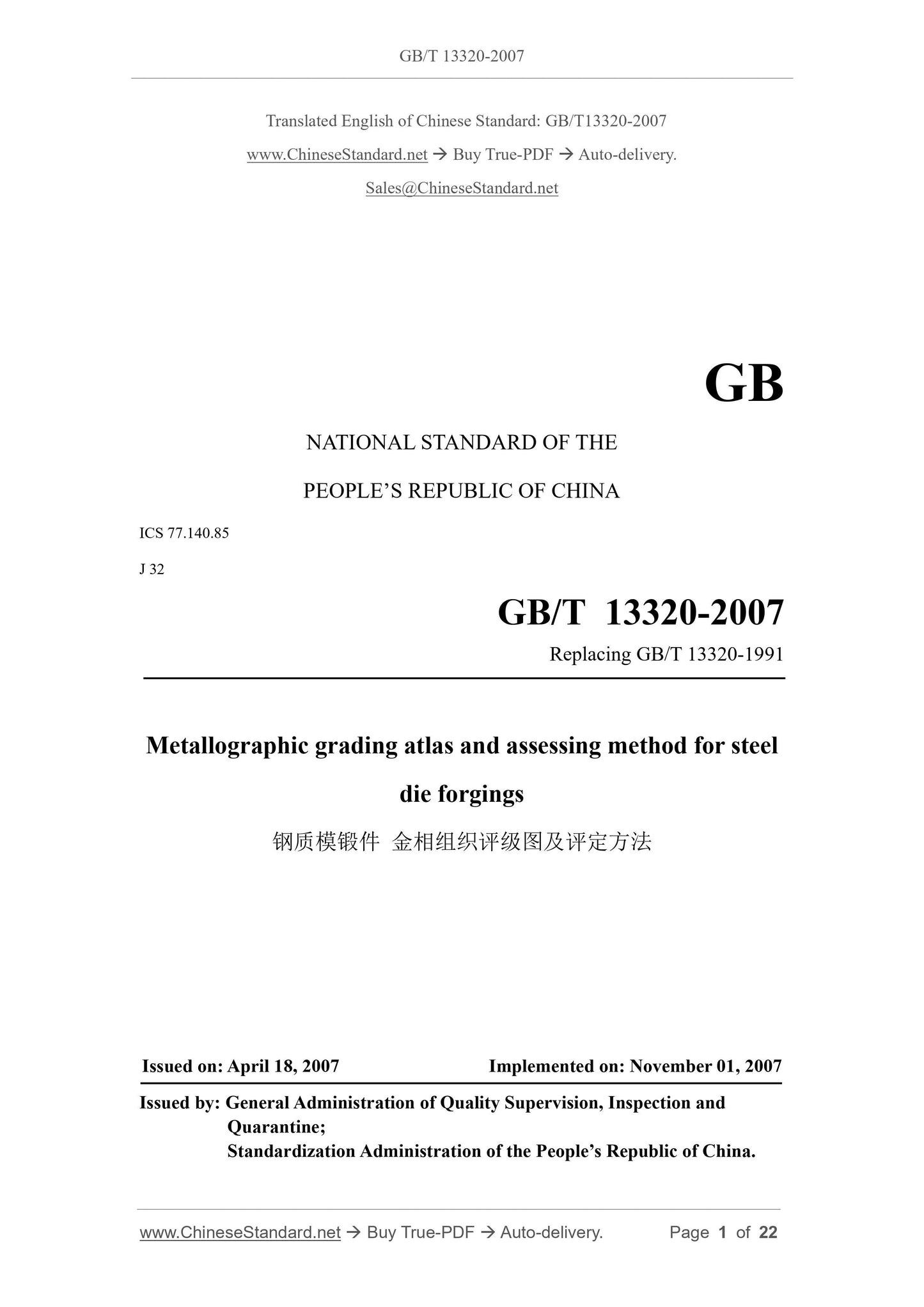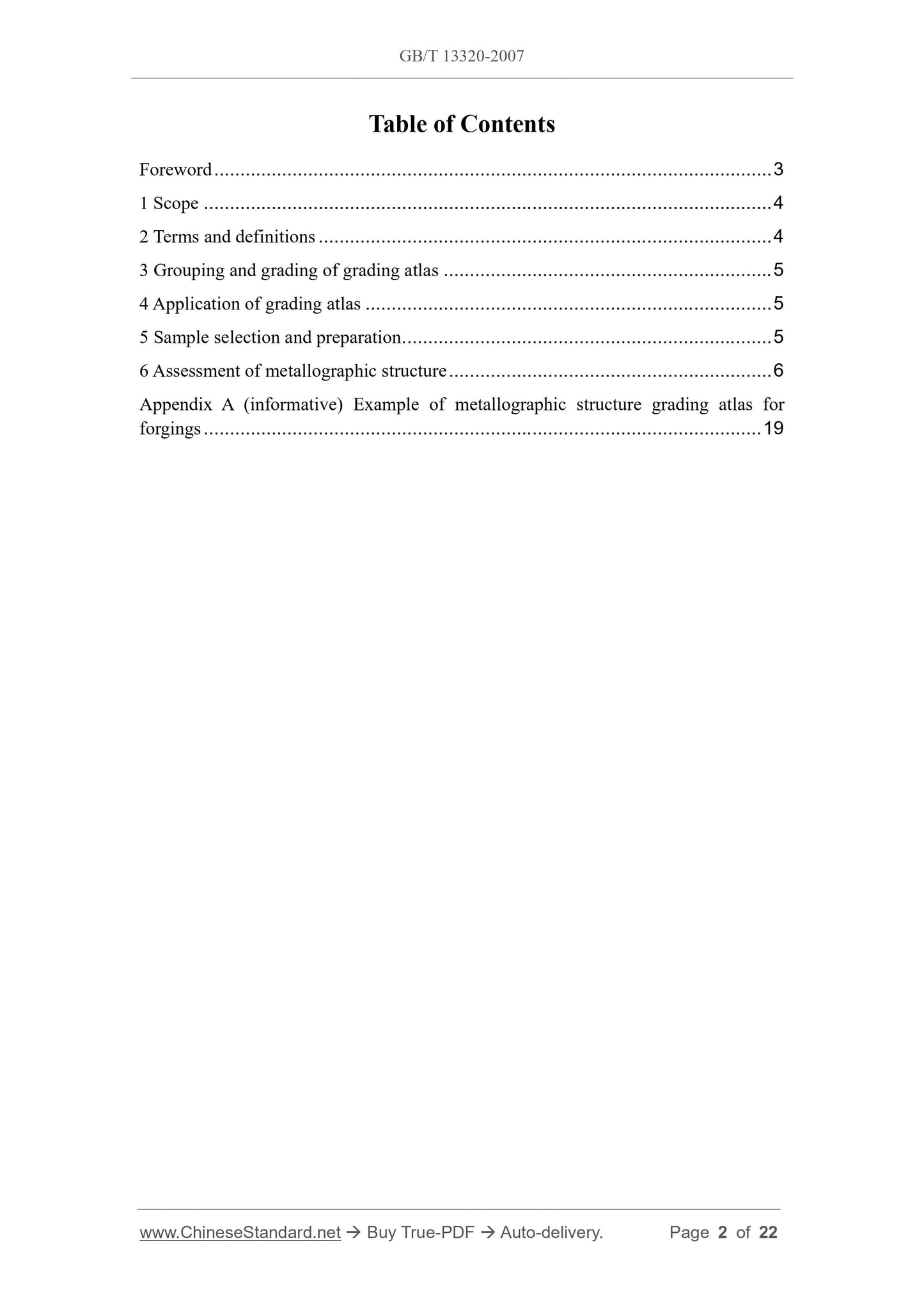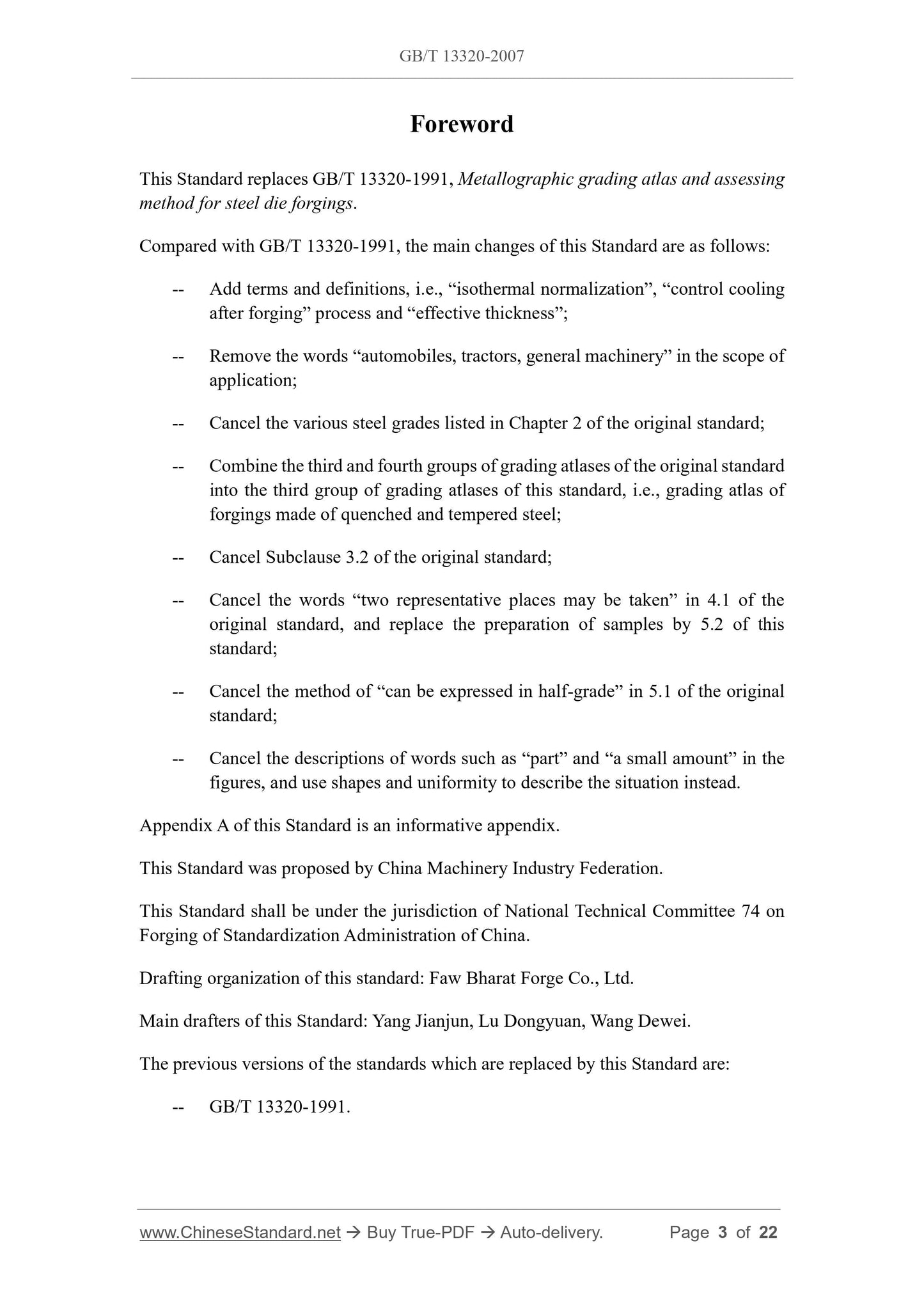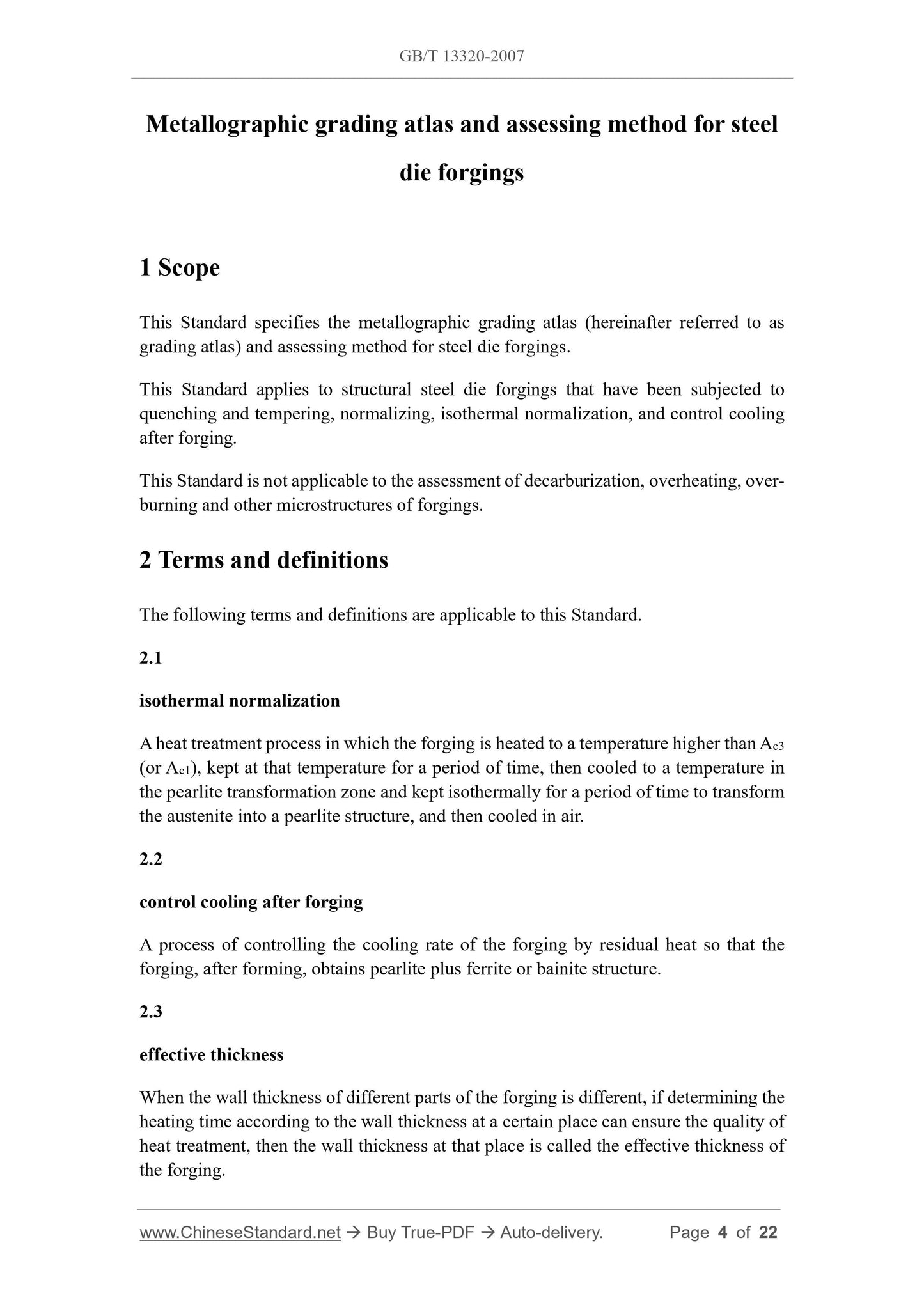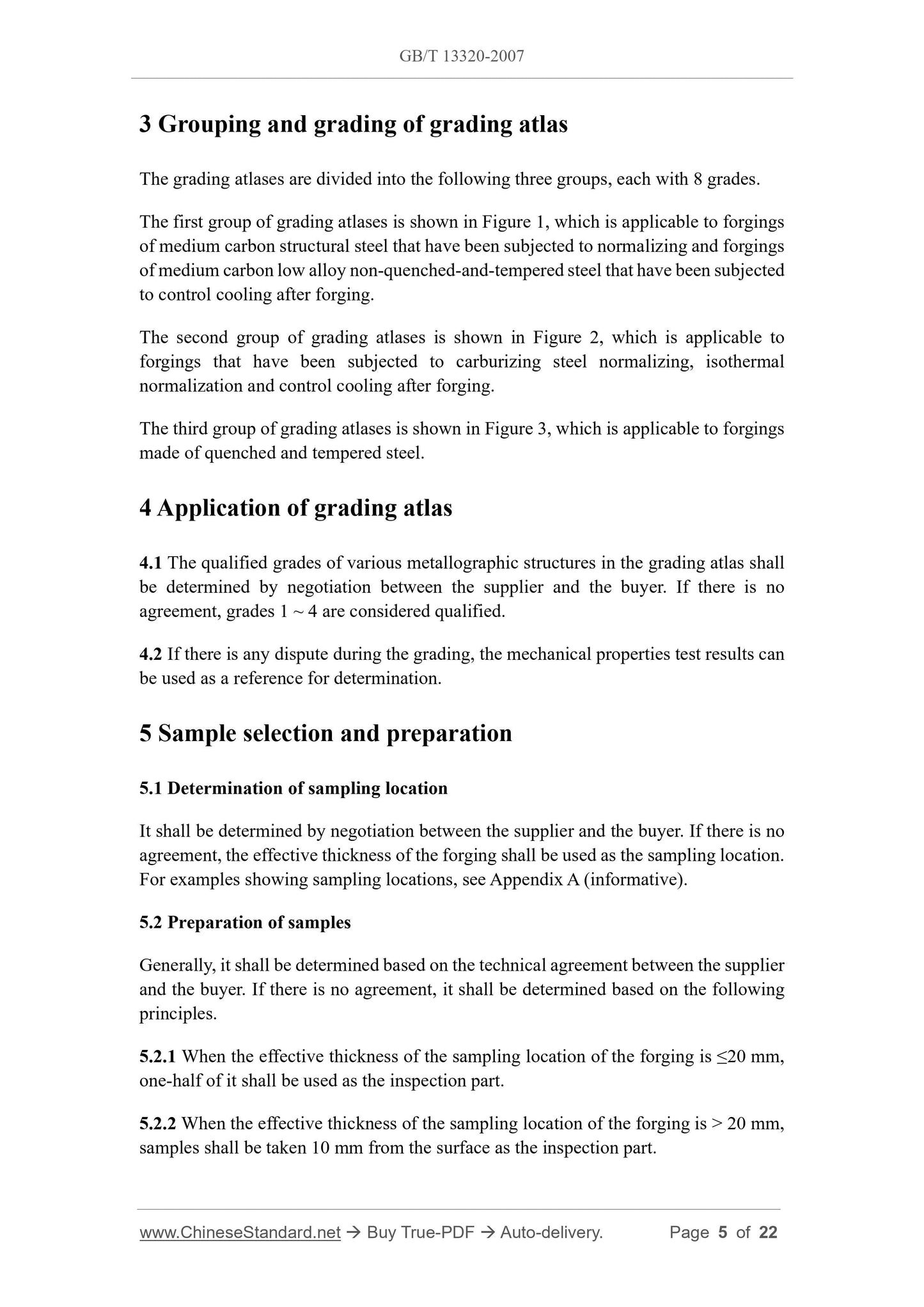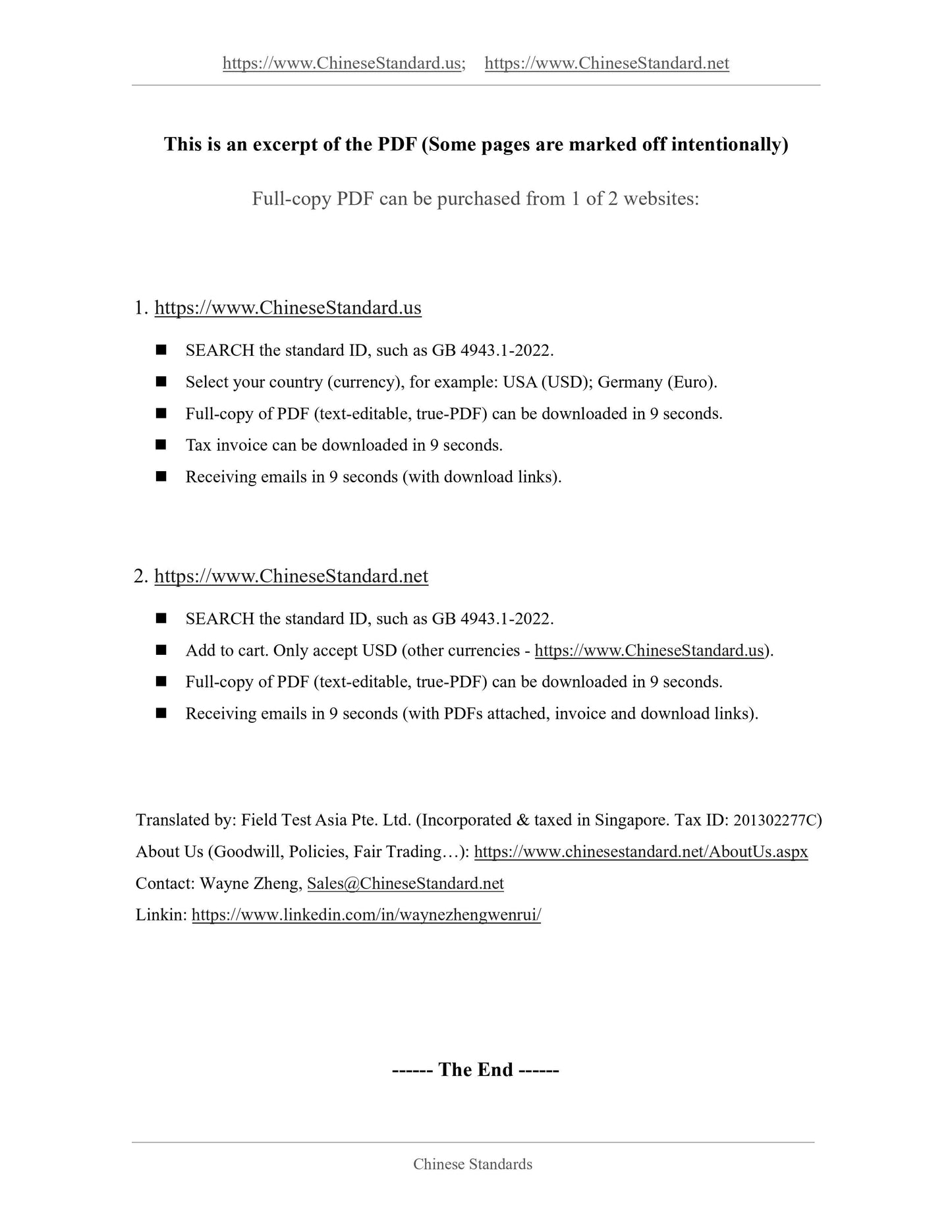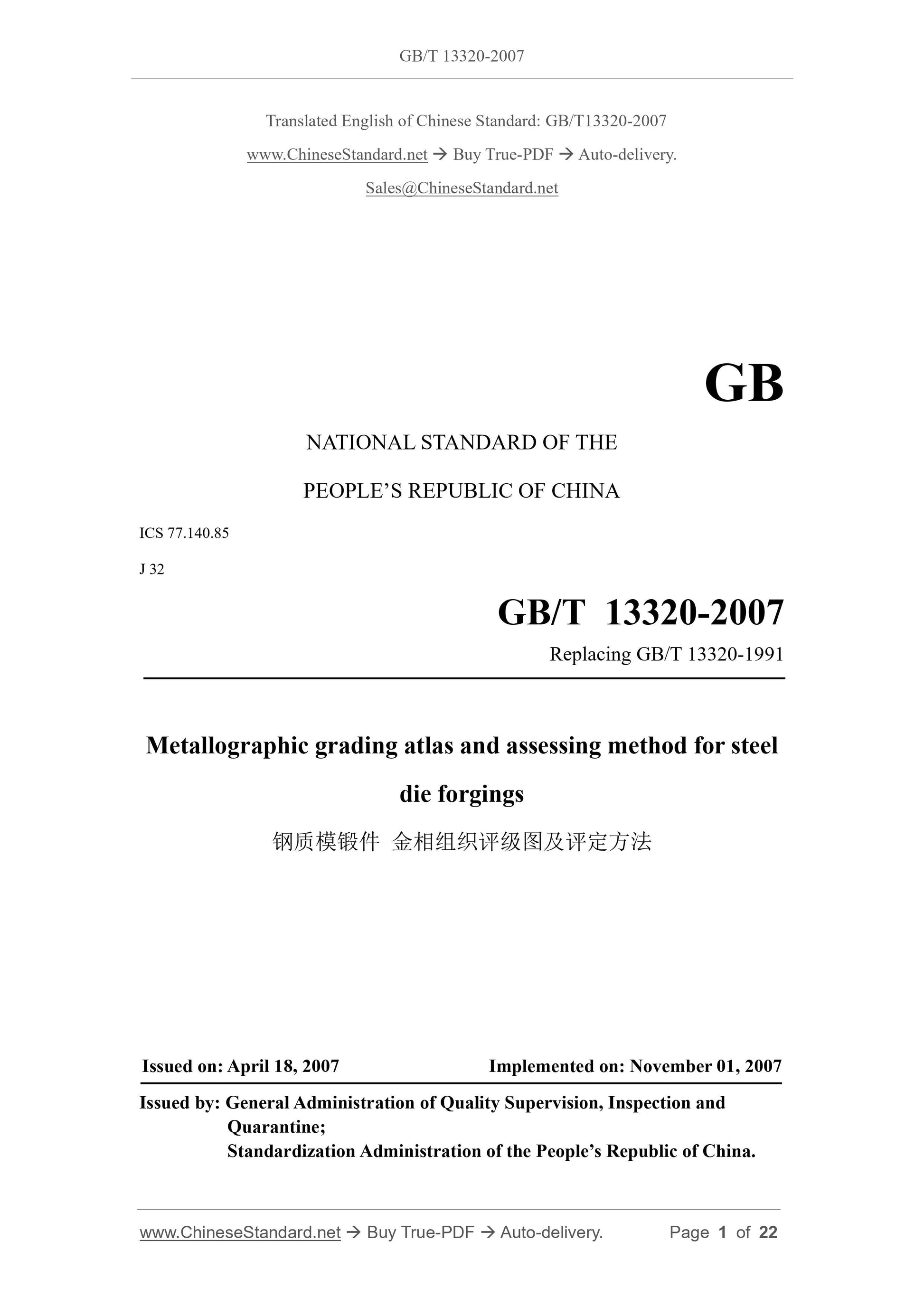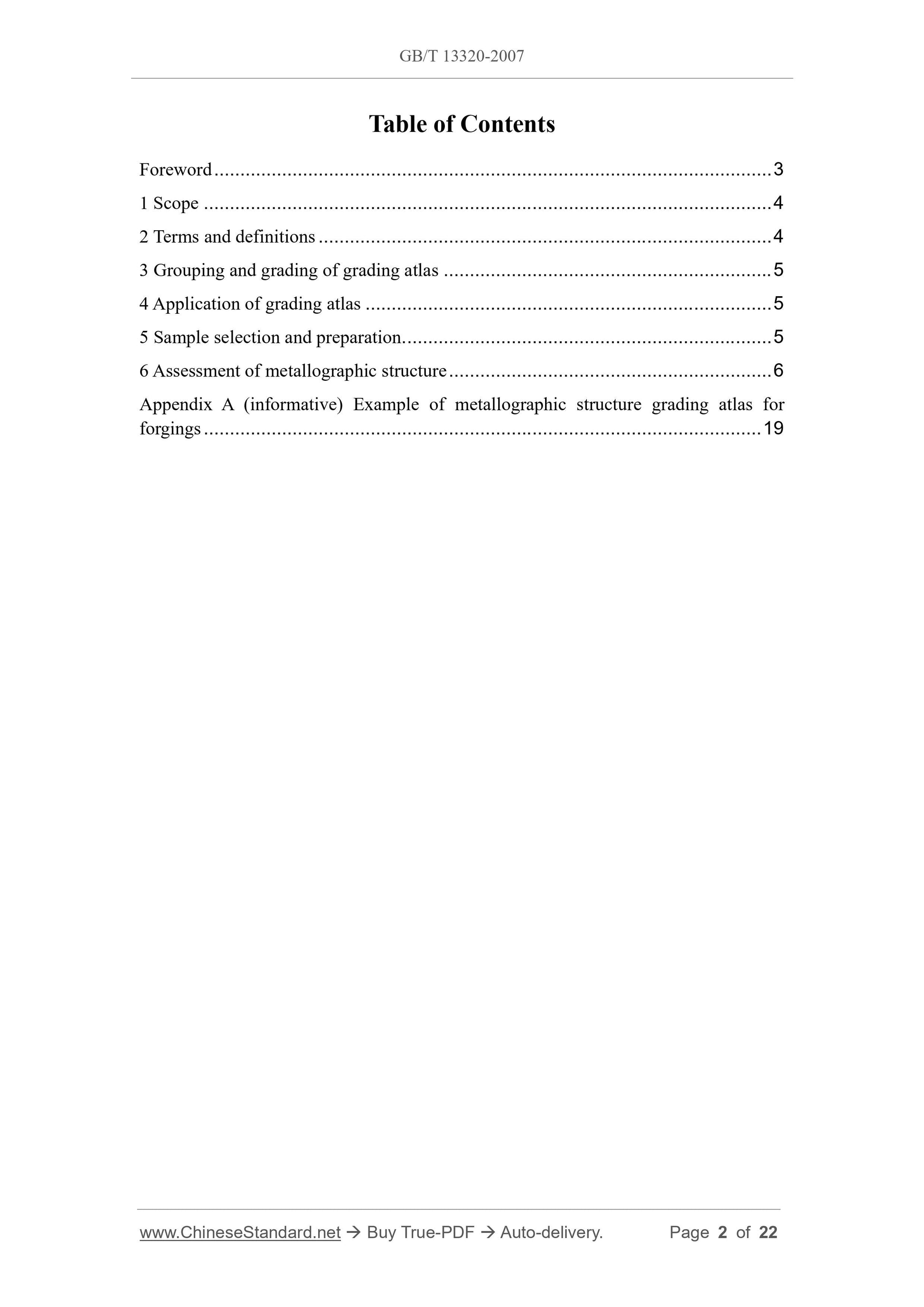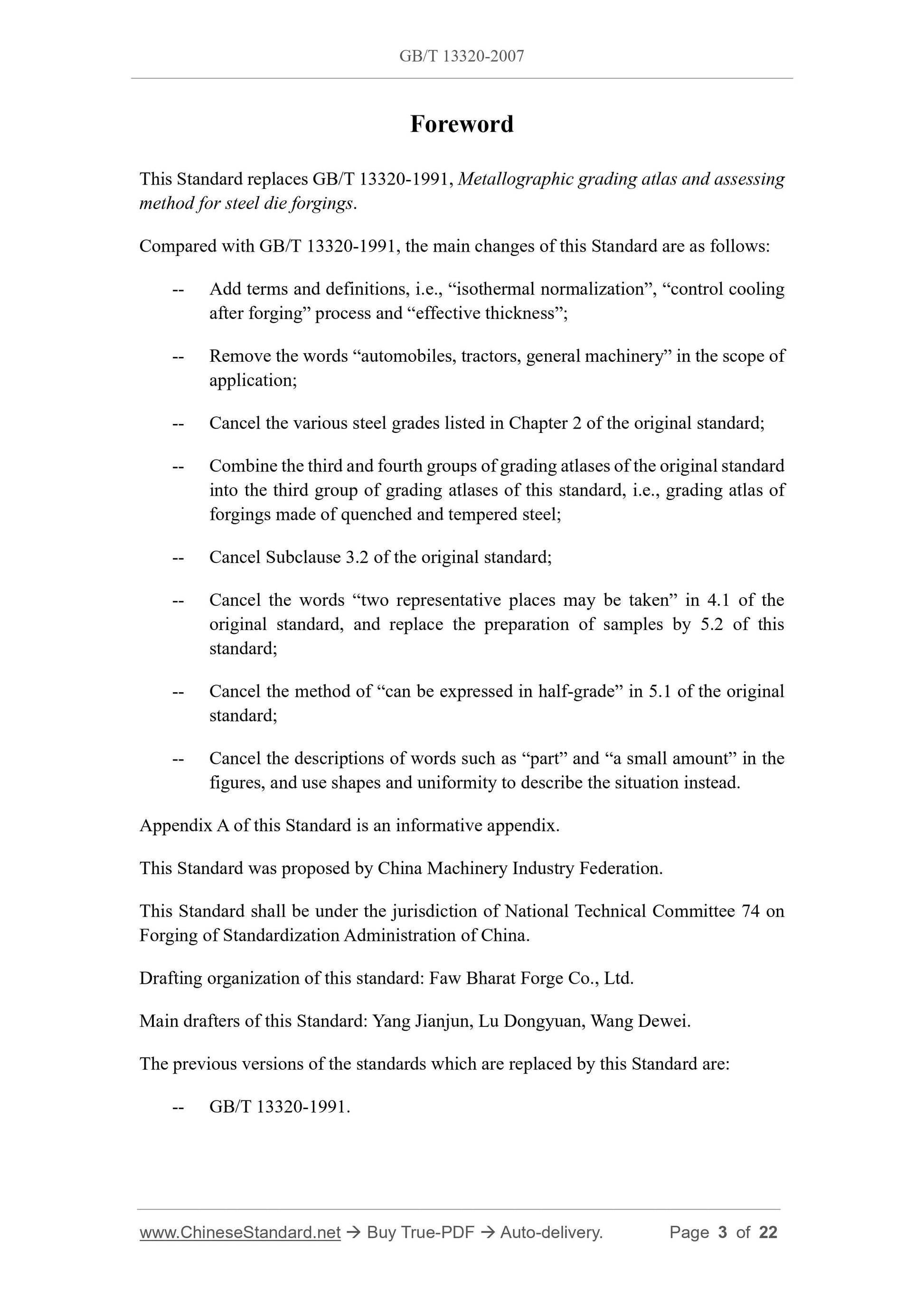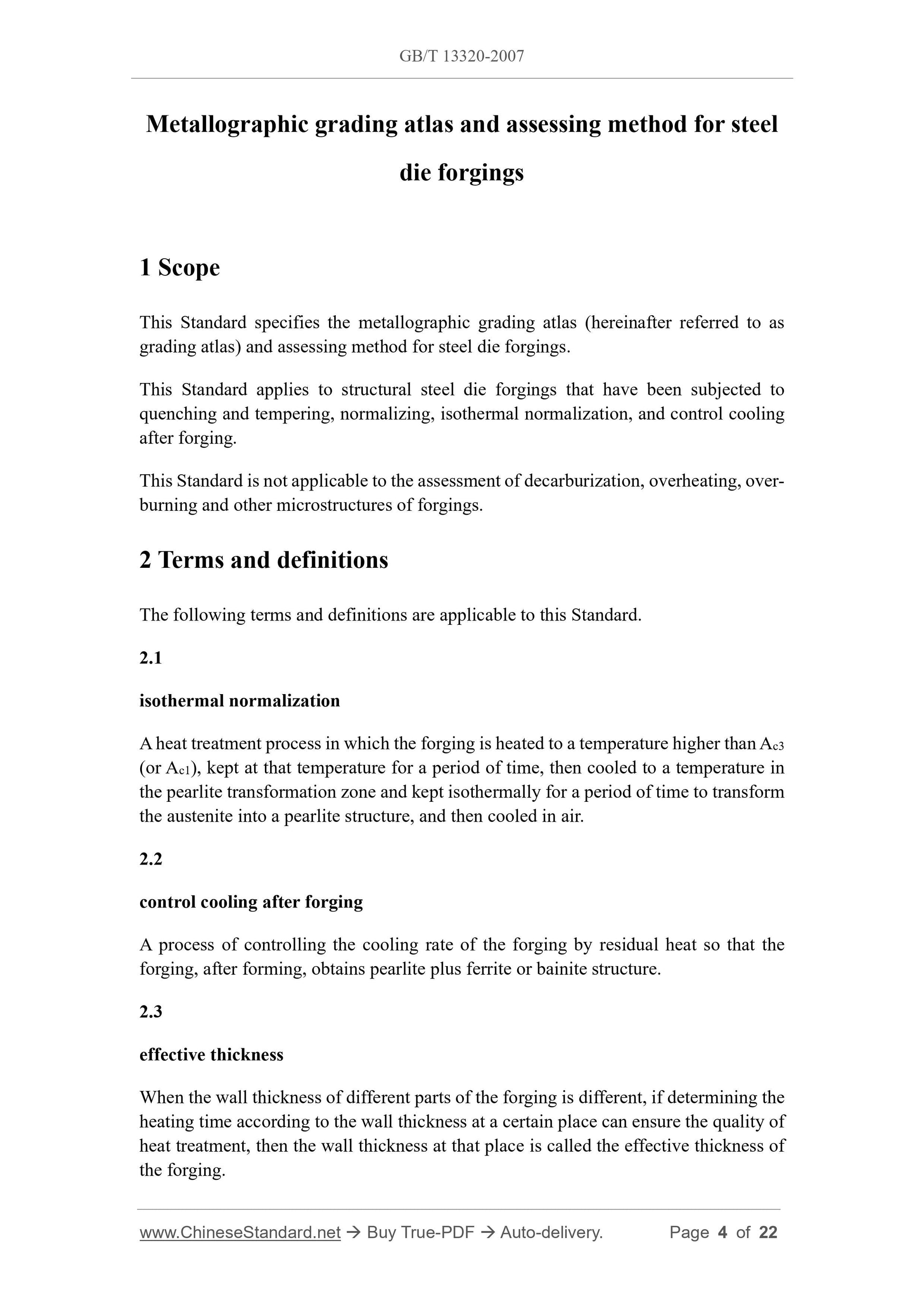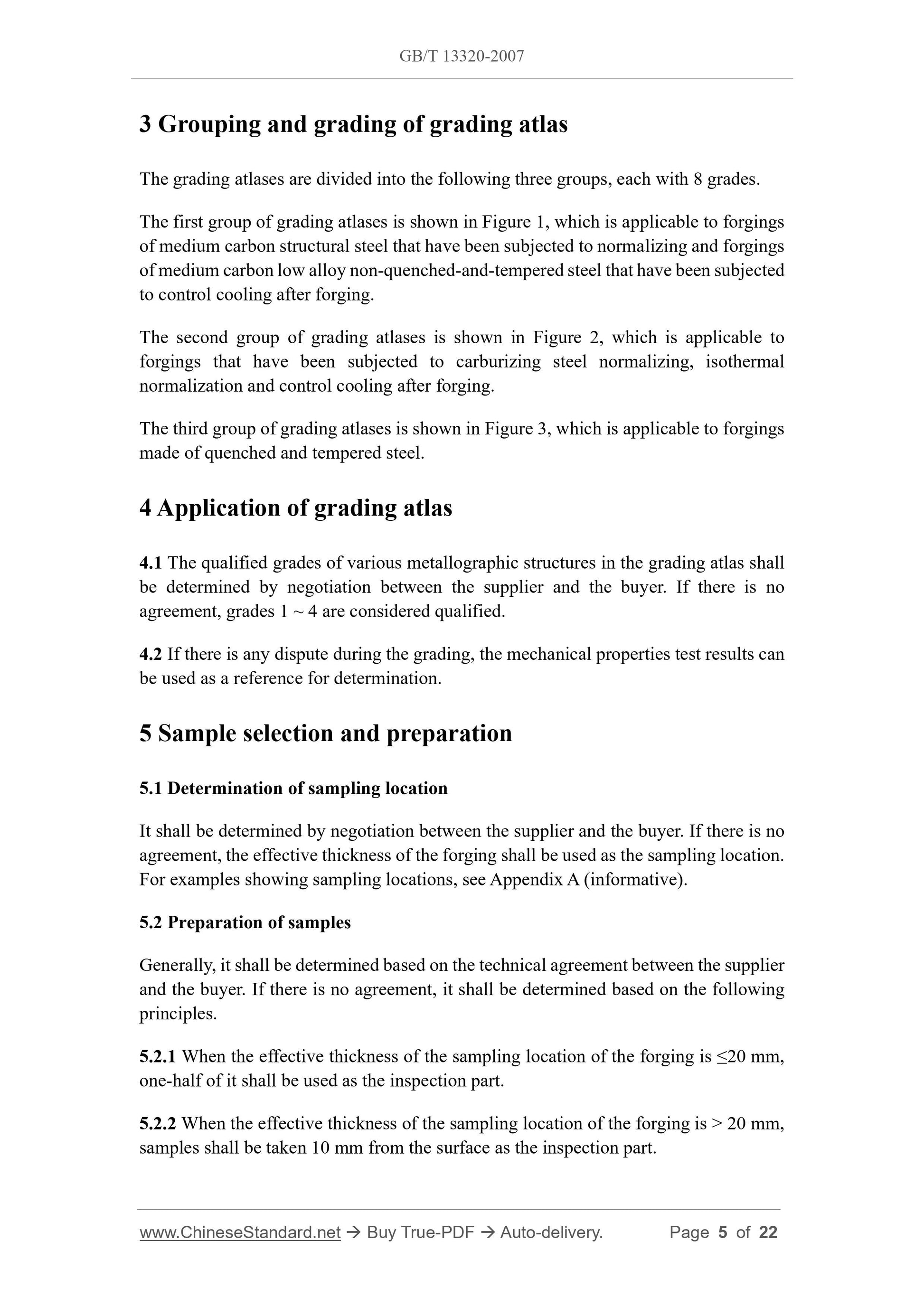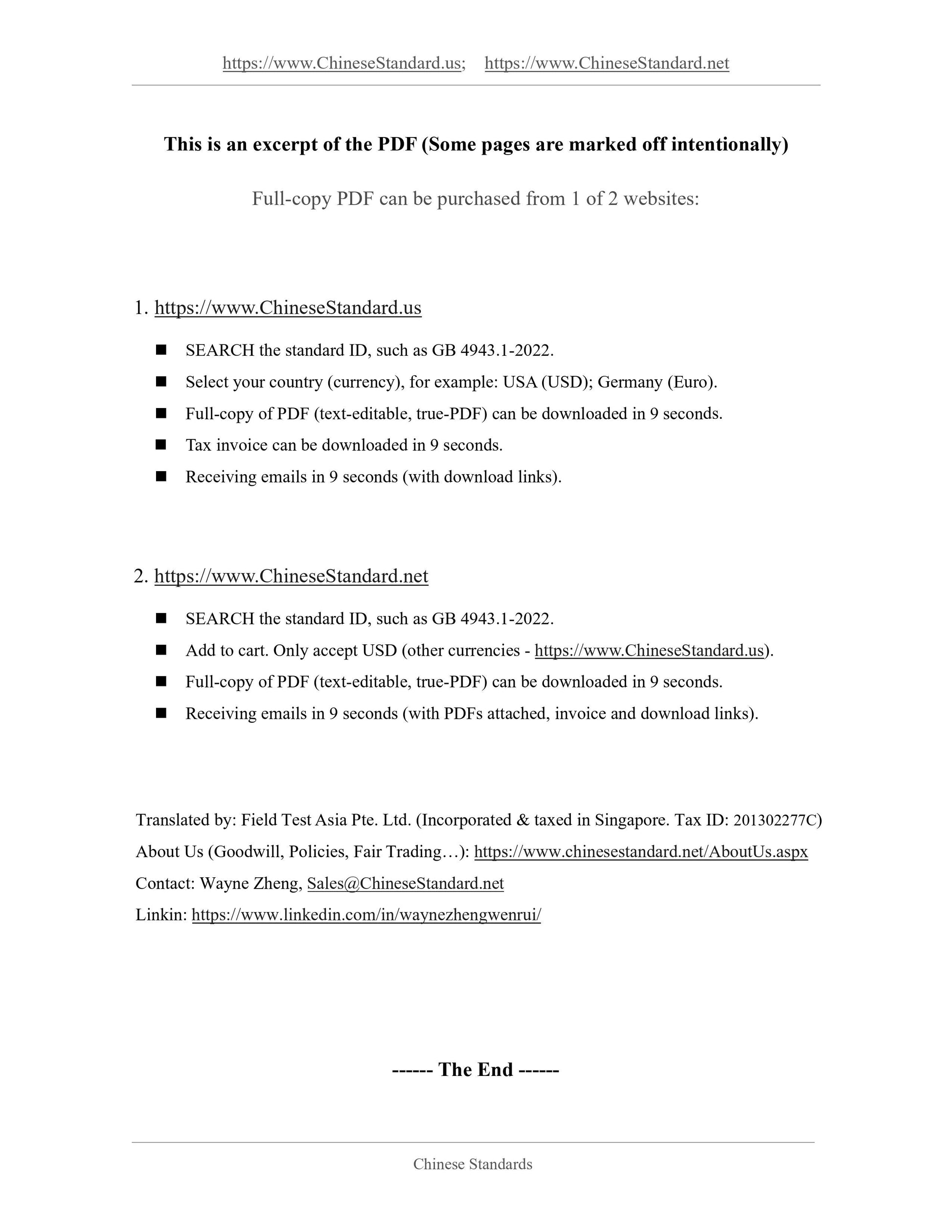1
/
of
6
www.ChineseStandard.us -- Field Test Asia Pte. Ltd.
GB/T 13320-2007 English PDF (GB/T13320-2007)
GB/T 13320-2007 English PDF (GB/T13320-2007)
Regular price
$65.00
Regular price
Sale price
$65.00
Unit price
/
per
Shipping calculated at checkout.
Couldn't load pickup availability
GB/T 13320-2007: Metallographic grading atlas and assessing method for steel die forgings
Delivery: 9 seconds. Download (and Email) true-PDF + Invoice.Get Quotation: Click GB/T 13320-2007 (Self-service in 1-minute)
Newer / historical versions: GB/T 13320-2007
Preview True-PDF
Scope
This Standard specifies the metallographic grading atlas (hereinafter referred to asgrading atlas) and assessing method for steel die forgings.
This Standard applies to structural steel die forgings that have been subjected to
quenching and tempering, normalizing, isothermal normalization, and control cooling
after forging.
This Standard is not applicable to the assessment of decarburization, overheating, over-
burning and other microstructures of forgings.
Basic Data
| Standard ID | GB/T 13320-2007 (GB/T13320-2007) |
| Description (Translated English) | Metallographic grading atlas and assessing method for steel die forgings |
| Sector / Industry | National Standard (Recommended) |
| Classification of Chinese Standard | J32 |
| Classification of International Standard | 77.140.85 |
| Word Count Estimation | 21,277 |
| Date of Issue | 2007-04-18 |
| Date of Implementation | 2007-11-01 |
| Older Standard (superseded by this standard) | GB/T 13320-1991 |
| Regulation (derived from) | National Standard Announcement 2007 No.4 (Total No.104) |
| Issuing agency(ies) | General Administration of Quality Supervision, Inspection and Quarantine of the People's Republic of China, Standardization Administration of the People's Republic of China |
| Summary | This standard specifies the microstructure of steel die forgings rating chart (hereinafter referred to as the ratings chart) and assessment methods. This standard applies after quenching, normalizing, isothermal normalizing, structural steel forgings after forging controlled cooling process. This standard does not apply to forging decarbonization, assessment burnt and other organizations, overheating. |
Share
